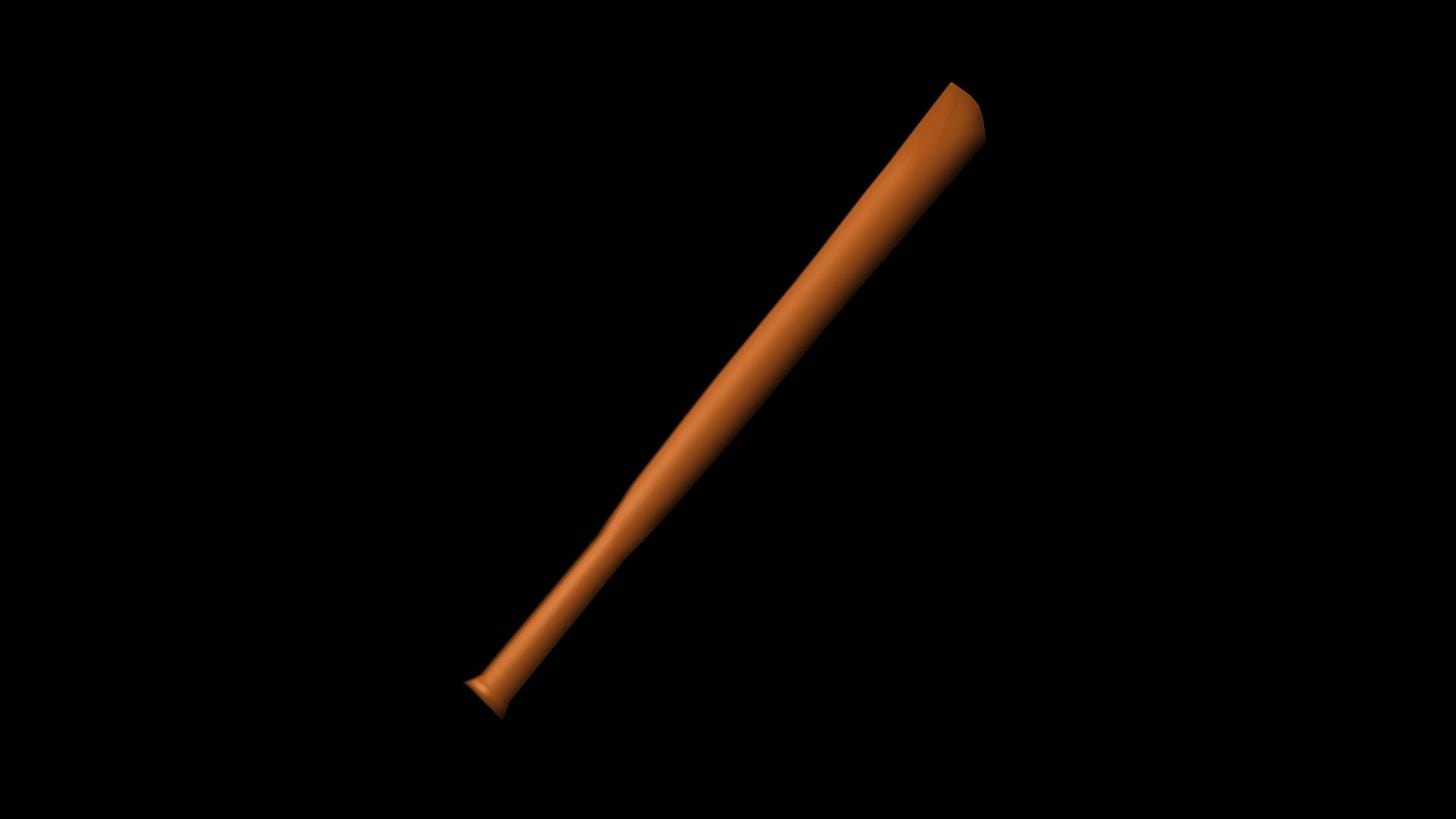Kutuluk Club, findings so far, and a glimpse into the next project
The Club
One of the many things I pursue is the recreation of historical objects. I often look for objects that haven’t been reproduced (to my knowledge). My current effort has been directed towards reproducing a find from a Kurgan site known as Kutuluk I. It was found in the grave of an adult male dated to around 2930 b.c. The object is 48.5cm (~19”) x 4.85cm (~1.9”) x 1.36cm (~.6”) and weighs somewhere around 770g. I have found other figures referencing a weight of 1.5kg. One of the initial steps I take with objects like this that I couldn’t see and take measurements in person is to make a 3d Model of it.
This helps with numerous things. If the object has taken damage that may have reduced it’s weight I can account for it. If it was a burial object I can account for obvious issues from being warped from the years under soil etc. It also allows me to make detailed measurements along the length of the object to get a more detailed idea of the dimensions. It also gives me an idea of the actual volume of an item which for casting is extremely important to estimate the total weight of Copper needed. My 3d model has a volume of 94cm. This is 841g of copper on my recently revised model.
The Process, and Progress.
I normally use a propane forge for most of my work. We have had massive flooding in my area for the last few years and my propane forge was partially underwater for a while, and I haven’t had the time to renovate it since the water has subsided so I opted to work on this using a pit forge fueled by charcoal. I am familiar with using charcoal as a fuel source as this is how I began blacksmithing.
I initially decided to use a form of petrobond casting sand and had poor results. This is mostly my own fault as I am unfamiliar with it and consequently failed twice. These two failures are pictured here.
The next step here from these learning experiences is to go back to using the tried and true method, clay, sand, and water, proper greensand. This is currently mixed and is looking quite promising. Copper does not retain heat for long so having everything prepped and ready is crucial.
Busy week ahead at the office so I doubt any work will get done on it until this weekend, but hopefully as of this coming Saturday it will be done.
The Next Project
As a physical companion piece to my article on a Historical Arthur, I am planning on reproducing a sword that he would have used, as well as outlining the origins of the sword so famously attached to him, known by many names over the centuries, Caledfwlch, Caliburnus, Escalibor, and finally the most familiar to our modern audience, Excalibur. What did it look like? How were swords in the period used? We will visit all of this soon.
Thanks for reading! Remember to subscribe below and share if you enjoy!







I look forward to the end result of the club